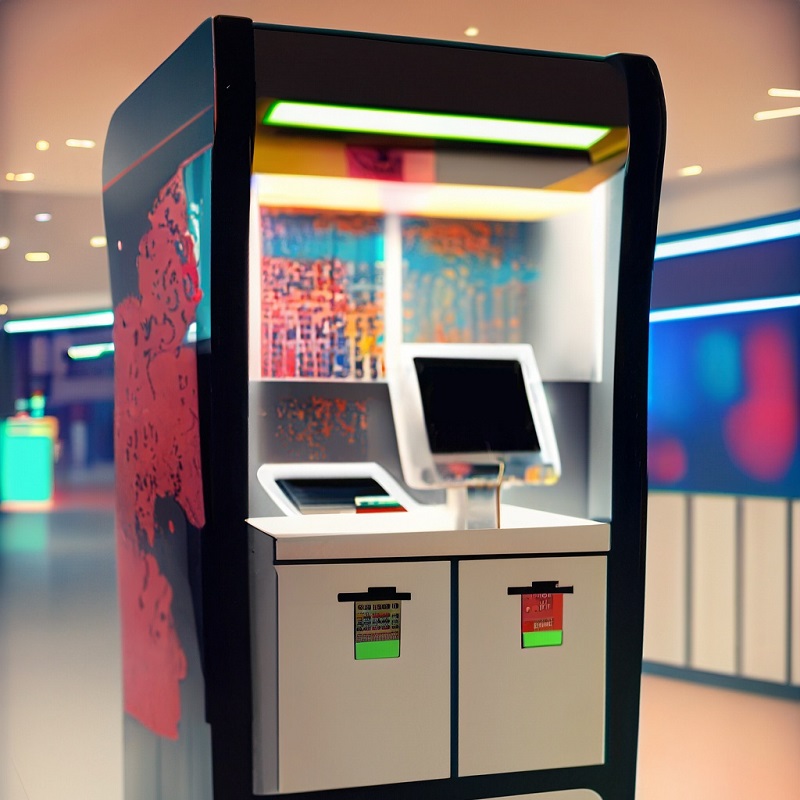
Self-Service Kiosks
Self-service payment terminals are becoming increasingly popular in today’s business landscape. With consumers’ increasing reliance on digital transactions and the need for contactless payments due to the COVID-19 pandemic, businesses are looking for ways to make transactions more efficient and convenient. What are the various use cases and applications of self-service payment terminals, and how they are transforming the way businesses handle transactions?
Retail Industry: Self-service payment terminals are being used extensively in the retail industry. Retail stores use these terminals to reduce checkout lines, which is a significant issue during peak hours. These terminals are also helping retailers to reduce operational costs by requiring less staff at checkout counters. Additionally, they enable retailers to provide a better customer experience by allowing customers to make purchases without the need for assistance from store staff.
Hospitality Industry: Self-service payment terminals are also used in the hospitality industry, particularly in fast-food chains and restaurants. These terminals enable customers to place orders and make payments without having to wait in line. They also help restaurant owners to reduce errors that could arise when taking orders manually, and increase efficiency during peak hours.
Transportation Industry: Self-service payment terminals are used extensively in the transportation industry, particularly in airports, train stations, and parking garages. These terminals allow passengers to purchase tickets and pay for parking fees quickly and easily, without having to queue up at ticket counters. They also help transportation companies to reduce operating costs by requiring less staff at ticket counters.
Healthcare Industry: Self-service payment terminals are increasingly being used in the healthcare industry as well. Patients can use these terminals to pay for their medical bills and co-payments easily and conveniently. Hospitals and clinics can also use these terminals to reduce paperwork and administrative costs associated with processing payments manually.
Financial Industry: Self-service payment terminals are used extensively in the financial industry. Banks and financial institutions use these terminals to enable customers to deposit and withdraw cash easily and efficiently. These terminals also help banks to reduce the need for manual cash handling and lower operating costs.
Self-service payment terminals have numerous applications in various industries, including retail, hospitality, transportation, healthcare, and finance. These terminals are transforming the way businesses handle transactions, making them more efficient, convenient, and secure. With the COVID-19 pandemic changing consumer behavior and the need for contactless payments, self-service payment terminals have become a necessity for businesses to stay competitive in today’s market. As technology continues to evolve, we can expect to see more innovative applications of self-service payment terminals in the future.
What are some types of payment kiosks in use today?
Payment kiosks have become increasingly popular in recent years due to their convenience and efficiency. They allow customers to make payments quickly and easily, without the need for assistance from staff.
Bill Payment Kiosks: Bill payment kiosks are used to pay bills for utilities, cable, phone, and other services. These kiosks allow customers to make payments quickly and securely, without the need for stamps, envelopes, or checks. Bill payment kiosks are often located in public places like shopping malls and convenience stores, making it easy for customers to make payments on-the-go.
Retail Payment Kiosks: Retail payment kiosks are used by retailers to process payments quickly and efficiently. These kiosks allow customers to make purchases using credit or debit cards, and they can also process cash payments. Retail payment kiosks are often located near checkout counters, reducing wait times for customers and increasing efficiency for retailers.
Parking Payment Kiosks: Parking payment kiosks are used to pay for parking fees in parking garages and lots. These kiosks allow customers to pay for parking using credit or debit cards, cash, or even mobile payments. Parking payment kiosks are often located near parking entrances and exits, making it easy for customers to pay for their parking without having to wait in line.
Ticketing Kiosks: Ticketing kiosks are used to purchase tickets for events and transportation services. These kiosks allow customers to purchase tickets using credit or debit cards, cash, or even mobile payments. Ticketing kiosks are often located in transportation hubs like airports and train stations, as well as in event venues like stadiums and theaters.
Healthcare Payment Kiosks: Healthcare payment kiosks are used to pay medical bills and co-payments. These kiosks allow patients to make payments quickly and easily, without having to wait in line or deal with paperwork. Healthcare payment kiosks are often located in hospitals and clinics, making it easy for patients to pay their bills while they are receiving medical care.
Payment kiosks have become an essential part of the way businesses handle transactions. They are efficient, convenient, and secure, allowing customers to make payments quickly and easily. With the COVID-19 pandemic changing consumer behavior and the need for contactless payments, payment kiosks have become even more critical for businesses to stay competitive in today’s market. As technology continues to evolve, we can expect to see more innovative types of payment kiosks in use in the future.
